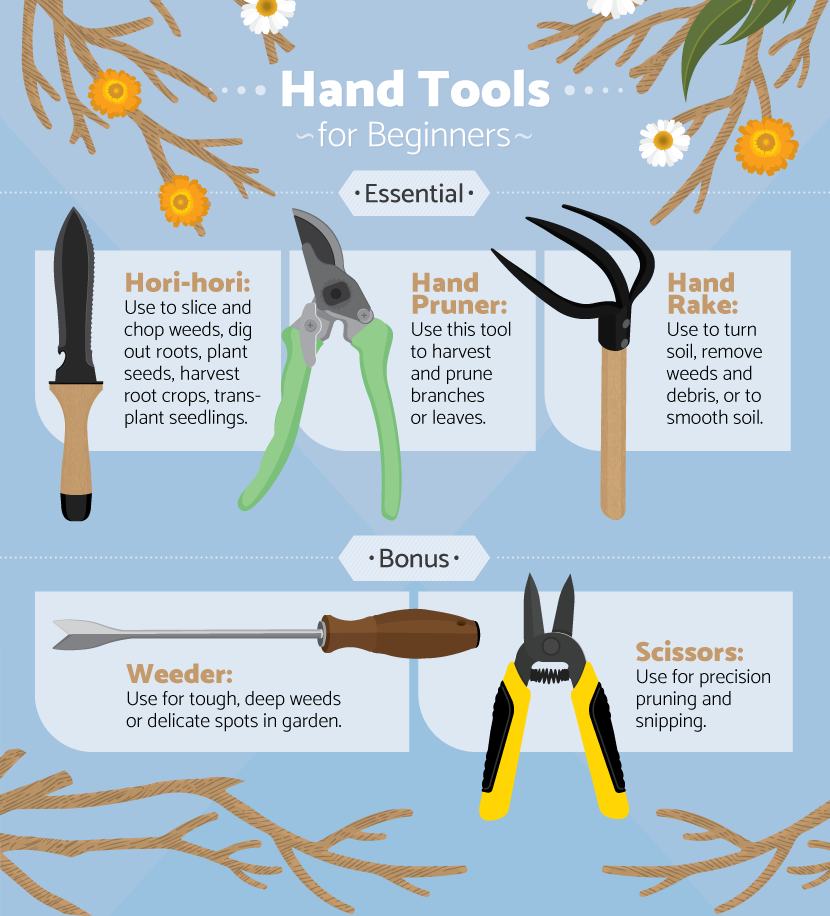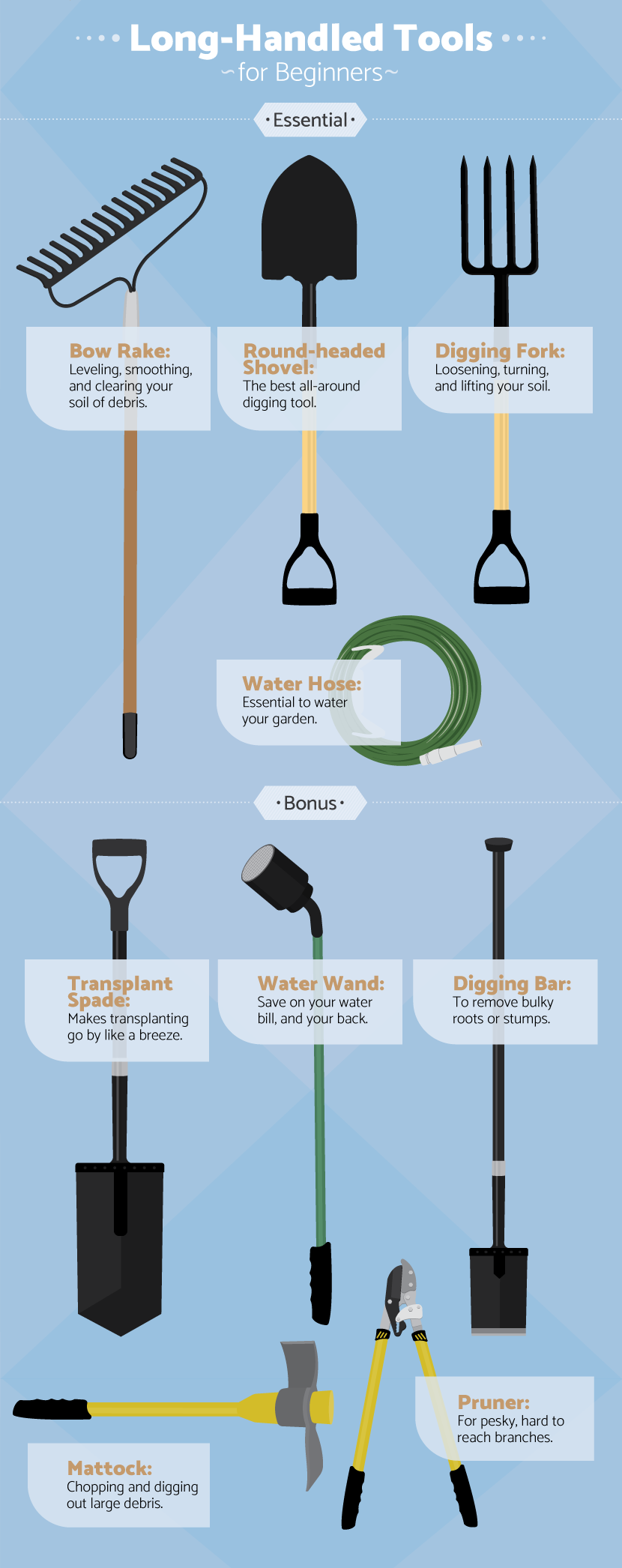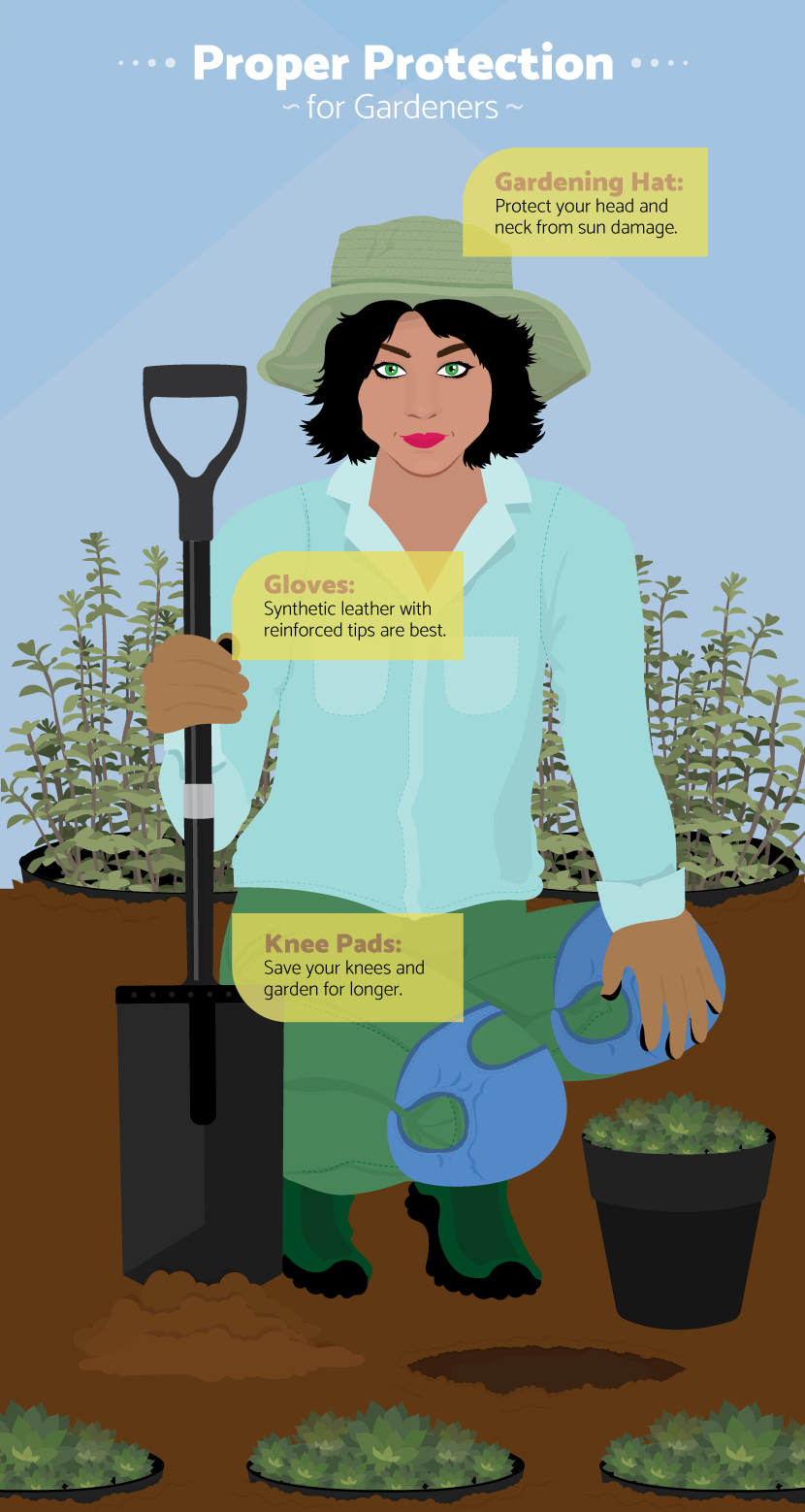Essential Tools for Beginner Gardeners
Multi-Purpose is the Way to Go
Getting started in the garden for the first time is a daunting task. There’s so much to learn:
- What plants to grow and how to care for them
- Pests, diseases, and how to prevent them
- Soil, watering, and light requirements
The list goes on and on. On top of that, you need to buy new tools that you might not be familiar with. Where many gardeners go wrong is picking up every type of tool they see.
It’s important to remember that getting into gardening is like getting into cooking – there’s an almost infinite supply of tools you can buy to make your job easier, but very few of these are necessary.
Sure, buying an apple corer/peeler/slicer might make your life easier in the kitchen, but a simple paring knife will do the job just fine while also being useful for other cooking tasks.
As a beginner gardener, buying high-quality tools that you can use for many different garden tasks is a much better strategy than picking up specialized, expensive tools that will only serve to clutter your tool shed.

You’ll find yourself using hand tools in your garden more than any other type of tool.
The trick is to avoid tools that only do one job and opt for ones that can take the place of two or more hand tools.
Essential Hand Tools
Hori-hori: This Japanese gardening knife is the Swiss army knife of the garden, replacing at least three different hand tools.
It’s a great weeding tool due to its sharp edge, making it a great choice for either slicing weeds or digging them out completely.
You can use it as a transplanting and seed-planting tool, as well as a way to harvest your root crops safely.
The hori-hori is the most essential gardening hand tool you can buy.
Hand pruner: Hand pruners are used mostly to chop branches and stems.
This breaks the “more than one purpose” rule, but pruning is such an essential gardening activity that it makes sense to have a tool dedicated to the job.
Hand rake: The hand rake is your soil manipulation tool.
You can use it to smooth out soil, remove any pesky weeds that your hori-hori didn’t take care of, or turn your soil as a mini-tiller.
These three tools are your essential hand tools, but if you have a little extra cash you may want to spring for a hand weeder and a pair of nice gardening scissors.
They’re not necessary, as a hori-hori and hand pruner can take the place of these tools, but there are situations where you may want a more specialized tool.

Now that you have your essential hand tools, let’s talk about long-handled tools.
You’ll find yourself using these tools less often in general, but they are very useful when you do need them, especially in larger gardens.
The right tools can save you a lot of physical effort, which is important in the garden to prevent posture or muscular issues that crop up over time.
Essential Long-Handled Tools
Bow rake: The bow rake is your surface-level soil manipulation tool.
It’s used mostly to level your garden, but can also rake gardens free of debris, making your soil more consistent for your plants.
It can also be used for leaves or light debris, but is heavier than standard leaf rakes, so it may tire you out to do so.
Digging fork: These are used to manipulate the soil below the surface of your garden. It’s far more effective than a spade for many different types of gardening activities.
Most gardeners use digging forks to loosen, lift, and turn over soil. In small gardens, digging forks are exceptionally useful for changing the composition or quality of your soil quickly.
Round-headed shovel: There are many different types of garden shovels, but you can’t go wrong with a simple round-headed shovel.
Most of your major earthmoving will take place with this tool. It can double as a transplanter or a means to dig out annoying weeds or stumps if necessary.
Water hose: Most beginner gardeners already own a hose, but it’s important to include on this list because it is perhaps the most essential long-handled tool!
Without it, you can’t deliver water to your plants and keep them growing.
If you want to add to your long-handled tool collection, consider these bonus tools:
Transplant spade: Your hori-hori or round-headed shovel can do most of the transplant work, but if you want a more focused tool,
the transplant spade is for you. It has a narrower, square head that digs nice trenches for your garden rows.
Water wand: Water wands will help you save both your back and water.
By focusing your watering only on areas that need it, you’ll avoid wasting water, and the hose extension it provides means you won’t need to bend over as much.
Pruner: A long-handled pruner will help you tend to hard-to-reach areas of the garden, most notably pesky tree branches blocking your sun.
Mattock: While mattocks are a versatile gardening tool, the simple fact is that most people don’t need them in the garden.
You’ll want to pick one up if you have a significant amount of digging, chopping, or soil loosening to do.
Digging bar: If you need to clear out stumps or deep roots in your garden before you begin planting, a digging bar can give you both the power and the leverage you need to clear your soil of debris.

The last collection of essential tools may come as a surprise.
Instead of more tools to work the soil or care for your plants, you should consider a few items to care for yourself.
Beginner gardeners often don’t recognize the toll that gardening can take on their bodies.
Gardening hat: Sun protection is absolutely crucial in the garden.
When gardening, you’ll often be in positions that expose parts of your body that don’t often get much sun,
so a quality gardening hat with neck protection will protect areas that are sensitive to burning.
Gardening gloves: There are many types of gardening gloves out there, made from a variety of materials, including leather and rubber.
The best type for a beginner will often be a lightweight, synthetic leather material with reinforced tips.
These give you enough durability to protect from sharp objects with enough flexibility to still be a workable glove.
Knee pads or a knee pad: There are two different types of knee protection: one is a pad that you place on the ground and kneel on, while the other is attached to your knees.
Which you choose is up to you, but be sure to pick up one of them. Kneeling on hard, uneven ground for hours at a time is a surefire way to wreck your knees over time.
Invest in High-Quality Tools
Now that you know that you only need a few tools to garden successfully, be sure to invest in the highest-quality versions of those tools that you can.
This might increase your up-front cost, but they’ll last forever, saving you boatloads of money in the long run.
Embed the article on your site

